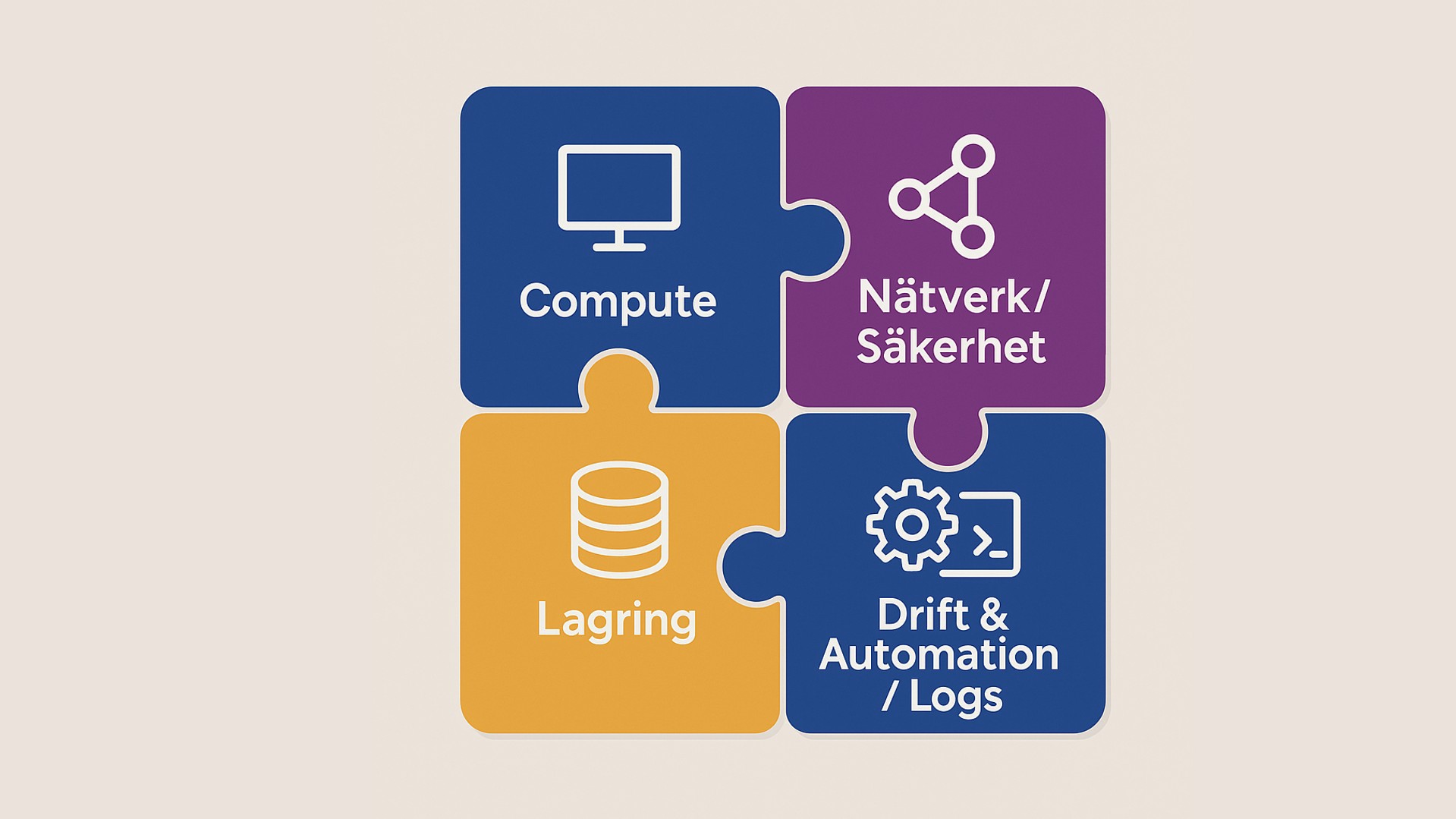Google Cloud - Architect Bootcamp
På denna kurs får du en gedigen genomgång av infrastruktur och plattformstjänster och lär dig bygga, säkra och driftsätta skalbara lösningar med beprövade arkitekturmönster, från nät och VM till containrar, CI/CD och drift.
Mer läsning: Google Cloud Platform - Gör rätt från början
Du designar VPC-nät och VM-miljöer, implementerar IAM och kostnadskontroll, containeriserar arbetslaster och orkestrerar dem i GKE med kontinuerliga leveranser. Du tränar även på driftsäkerhet, övervakning och incidentrespons för att nå affärs- och prestandamål på Google Cloud.
Kursinnehållet är en kombination av dessa kurser:
Målgrupp och förkunskaper
Kursen är framtagen för Cloud Solutions Architects, DevOps-ingenjörer, SRE:er, system- och driftroller, applikationsutvecklare och IT-chefer, samt team som använder Google Cloud för nya lösningar eller för att integrera befintliga system, miljöer och infrastruktur.
För att hänga med i kursens tempo och tillgodogöra dig dess innehåll förutsätts du ha genomfört Google Cloud Fundamentals (eller likvärdig erfarenhet), vara bekväm med kommandoraden och Linux-miljöer samt ha operativ erfarenhet av att driftsätta och förvalta applikationer on-prem eller i publik molnplattform.
För att alltid hålla en hög kvalitet på våra kurser använder vi både engelsk- och svensktalande experter som kursledare.
Detaljerad information
Kursmaterialet är på engelska, med detta innehåll:
Introduction to Google Cloud
Explore ways to interact with Google Cloud, use Cloud Console and Cloud Shell, create Cloud Storage buckets, and deploy solutions via Google Cloud Marketplace.
Virtual Networks
Identify VPC objects and network types, implement VPCs and firewall rules, and enable Private Google Access and Cloud NAT.
Virtual Machines
Review machine types, CPU/memory and disk options, understand pricing and discounts, and create customized Compute Engine instances.
CloudIAM
Understand the IAM resource hierarchy, role types and member types, and implement fine-grained access control across resources.
Storage and Database Services
Compare Cloud Storage, Cloud SQL, Spanner, Firestore and Bigtable; choose services by requirements and implement them.
Resource Management
Navigate the resource hierarchy, manage quotas, organize with labels, set budget alerts, and analyze billing data with BigQuery.
Resource Monitoring
Use monitoring, logging, error reporting, tracing and debugging; build charts, alerts and uptime checks; debug with Cloud Debugger.
Interconnecting Networks
Survey interconnect and peering options, choose the right service, configure VPN gateways, and decide between Shared VPC and VPC Peering.
Load Balancing and Autoscaling
Review load-balancing products, select the right option, understand autoscaling behavior, and configure load balancers and policies.
Infrastructure Modernization
Automate provisioning with Deployment Manager or Terraform and leverage Marketplace for curated solutions.
Managed Services
Discover Google Cloud’s managed data processing services and when to apply them.
Introduction to Containers and Docker
Create and package Docker containers, store images in Container Registry, and run containers.
Kubernetes Basics
Provision GKE clusters, deploy and manage containers with kubectl, and refactor apps into microservices with Deployments and Services.
Deploying to Kubernetes
Create Deployments; trigger, pause, resume and roll back updates; implement canary strategies.
Creating a Continuous Delivery Pipeline
Provision Spinnaker or Jenkins on Kubernetes, trigger builds from a source repo, create pipelines, and run canary releases with two prod versions.
Defining the Service
Model users as roles/personas, write user stories, define KPIs, evaluate with SLOs/SLIs, and apply SMART criteria.
Microservice Design and Architecture
Decompose monoliths, define service boundaries, design stateful/stateless services, apply 12-factor best practices, and build consistent RESTful APIs.
DevOps Automation
Automate deployments with CI/CD, use Cloud Source Repositories, build with Cloud Build and triggers, manage images in Container Registry, and define infra as code.
Choosing Storage Solutions
Select storage by use case, durability, availability, scalability and cost; apply Cloud Storage, Cloud SQL/Spanner, Firestore/Bigtable, Memorystore and BigQuery.
Google Cloud and Hybrid Network Architecture
Design cost-, security- and performance-optimized VPCs; configure global/regional load balancers; use Cloud CDN; analyze with Network Intelligence Center; connect via peering, VPN and Cloud Interconnect.
Deploying Applications to Google Cloud
Choose the right deployment service; use instance templates and groups for resilient scale; orchestrate microservices with GKE; leverage App Engine and Cloud Functions.
Designing Reliable Systems
Design for availability, durability and scalability; avoid single/correlated failures; apply circuit breaker and truncated backoff; use lazy deletion; plan disaster recovery.
Security
Apply security best practices; use Security Command Center; govern with org policies and folders; secure users via IAM/IAP/Identity Platform; manage service accounts; harden networks; mitigate DDoS with Cloud DNS and Armor.
Maintenance and Monitoring
Manage releases with rolling, blue/green and canary; forecast and optimize cost with the pricing calculator and billing analytics; monitor SLOs with Dashboards and Uptime Checks; respond with Alerts.
Kursen hålls på begäran - Kontakta oss för mer information.
Telefon: 08-562 557 50 E-post: kursbokning@cornerstone.se
Relaterat innehåll


